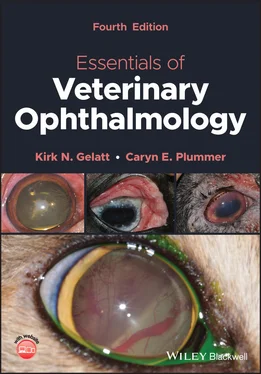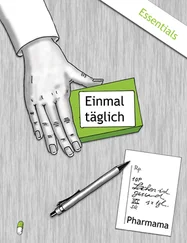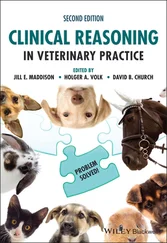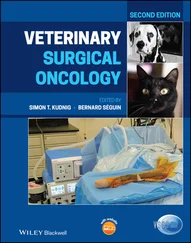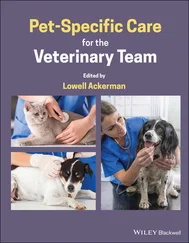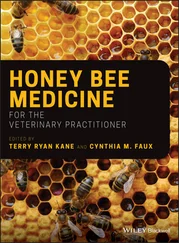10 Section 4: Special Species 14 Feline Ophthalmology Introduction Diseases of the Eyelids Congenital Eyelid Abnormalities Structural Eyelid Abnormalities Blepharitis Eyelid Cysts and Nodules Eyelid Neoplasia Diseases of the Nasolacrimal System Diseases of the Third Eyelid Ocular Surface Disease Conjunctival Disease Conjunctival Neoplasia Keratoconjunctival Disease Treatment Corneal Disease Diseases of the Anterior Uvea Anterior Uveitis Glaucoma Diseases of the Lens and Cataract Formation Diseases of the Posterior Segment Lysosomal Storage Diseases Diseases of the Optic Nerve and Central Nervous System Diseases of the Orbit 15 Equine Ophthalmology Examination of the Equine Eye Ocular Problems in the Equine Neonate Equine Orbit Diseases and Surgery of the Eyelids Diseases of the Conjunctiva Diseases of the Nictitating Membrane Nasolacrimal Disease Diseases of the Equine Cornea Diseases of the Equine Uvea Uveitis Lens Posterior Segment 16 Food and Fiber Animal Ophthalmology Bovine Ocular Examination and Ophthalmic Parameters Orbit and Globe The Nasolacrimal System Conjunctiva and Cornea Glaucoma Uvea Lens Ocular Fundi Optic Nerve Diseases Sheep and Goats Eyelids Conjunctiva and Cornea Pigs New World Camelids 17 Exotic Animals Considerations for Ophthalmic Examinations in Laboratory Animals Nonhuman Primates Exotic Animals Fish Mammals Avian Ophthalmology Marine and Other Aquatic Mammals
11 Section 5: Ophthalmic and Systemic Diseases 18 Neuro‐ophthalmology Neuro‐ophthalmic Examination Neuroanatomical Lesion Localization Neuro‐ophthalmic Diseases 19 Ocular Manifestations of Systemic Disease Introduction Section I: DogsCongenital Developmental Acquired Section II: CatsCongenital Developmental Acquired Section III: HorsesCongenital Acquired Section IV: Food AnimalsCongenital
12 Appendix A: Inherited Ophthalmic Diseases in the Dog
13 Appendix B: Inherited Eye Diseases in the Cat
14 Appendix C: Inherited Eye Diseases in the Horse
15 Appendix D: Inherited Eye Diseases in Production Animals
16 Appendix E: Lysosomal Storage Diseases in the Dog, Cat, and Food Animals
17 GlossaryCommon ophthalmic roots: Common words:
18 Index
19 End User License Agreement
1 Chapter 1 Table 1.1 Sequence of ocular development in human, mouse, and dog. Table 1.2 Sequence of ocular development in the cow. Table 1.3 Embryonic origins of ocular tissues. Table 1.4 Orbital dimensions. Table 1.5 Foramina and associated nerves and blood vessels. Table 1.6 Muscles of the eye and eyelids. Table 1.7 External globe dimensions (mm). Table 1.8 Width and height (mm) of the cornea measured in a straight line.
2 Chapter 2 Table 2.1 Reflexes involving the blink response. Table 2.2 Blinking rates of domestic animals. Table 2.3 Elastic moduli of layers of the cornea as determined by atomic for... Table 2.4 Components of the pupillary light reflex. Table 2.5 Adrenergic receptors in the iris and ciliary body. Table 2.6 Estimates of aqueous humor dynamics in selected species. Table 2.7 Aqueous humor dynamics formulas. Table 2.8 Methods to investigate aqueous humor dynamics. Table 2.9 Comparative volumes of the chambers and select structures of the e... Table 2.10 IOPs in select animal species. Table 2.11 Factors that cause short‐ and long‐term fluctuations in IOP. Table 2.12 Luminances of natural and artificial light sources. a Table 2.13 Refraction constants in the human eye. Table 2.14 Eye size (ascending order) and corneal power (descending order) i... Table 2.15 Refractive errors in selected animal species. a Table 2.16 Visual acuity in select species. a
3 Chapter 3 Table 3.1 Recommended ophthalmic antibiotic choices based on in vitro suscep... Table 3.2 Antifungal medications used to treat keratomycosis. Table 3.3 Summary of Selected Topically Administered Antiviral Drugs for Tre... Table 3.4 Corticosteroids for veterinary ophthalmology. Table 3.5 Nonsteroidal anti‐inflammatory drugs (NSAIDS) in Veterinary Ophth... Table 3.6 A summary of the reported mydriatic effects of some commonly utili... Table 3.7 Commercially available corticosteroid agents for subconjunctival i... Table 3.8 Topical and local/injectable anesthetics for veterinary ophthalmol... Table 3.9 Systemic carbonic anhydrase inhibitors (mg/kg): Single‐dose studie... Table 3.10 Hyperosmotics for veterinary ophthalmology.
4 Chapter 4Table 4.1 Fundus magnification with direct ophthalmoscopy in animals. aTable 4.2 Light beam selections for direct ophthalmoscopy.Table 4.3 Topical stains for veterinary ophthalmology.Table 4.4 Normal IOP reported in animals.
5 Chapter 5Table 5.1 Differential diagnoses for exophthalmos in dogs.Table 5.2 Recommended treatment and prognosis for traumatic proptosis in do...
6 Chapter 6Table 6.1 Methods to treat distichiasis in the dog.Table 6.2 Site of entropion in selected breeds.Table 6.3 Surgical procedures for canine entropion.Table 6.4 Histologic classification and frequency of canine eyelid neoplasm...
7 Chapter 8Table 8.1 Summary of cytology in conjunctivitis.Table 8.2 Surgical techniques to replace the prolapsed nictitating membrane...
8 Chapter 9Table 9.1 Dynamics of corneal healing after corneal ulcerations.Table 9.2 Types of corneal ulcerations in the dog.Table 9.3 Antiproteolytic agents for topical treatment of melting corneal u...Table 9.4 Breed predisposition to CSK (pannus) with age of onset if availab...Table 9.5 Crystalline corneal opacities in the dog.
9 Chapter 10Table 10.1 Types of glaucomas reported.Table 10.2 Clinical effects of elevated IOP.Table 10.3 Clinical signs of the primary glaucomas in the dog.Table 10.4 Breeds with primary glaucomas.
10 Chapter 11Table 11.1 Clinical signs of uveitis in the dog.Table 11.2 Recommended therapies for anterior uveitis in the dog.Table 11.3 Diagnosis and treatment of the systemic mycoses and anterior uve...
11 Chapter 12Table 12.1 Breed predisposed to dystrophic PPMs causing secondary anterior ...Table 12.2 Canine breeds affected by PHPV/PHTVL causing lens opacification ...Table 12.3 Canine breeds affected by presumed HCs.Table 12.4 Canine breeds affected by HCs in which mode of inheritance has b...Table 12.5 Canine breeds affected with PLL mode of inheritance and genetic ...
12 Chapter 13Table 13.1 Ophthalmoscopic findings in Collie eye anomaly.Table 13.2 Ophthalmoscopic findings in canine retinal dysplasia.Table 13.3 Breeds of dogs affected with retinal dysplasia (RD).Table 13.4 Ophthalmoscopic changes in PRA.Table 13.5 Characteristics of the canine retinal photoreceptor dysplasias....Table 13.6 Characteristics of canine retinal photoreceptor degenerations.Table 13.7 Ophthalmoscopic changes in chorioretinitis.
13 Chapter 14Table 14.1 Frequency of feline eyelid tumors.
14 Chapter 15Table 15.1 Treatment for periocular squamous cell carcinoma.Table 15.2 Treatment for periocular sarcoids.Table 15.3 Goals of corneal ulceration therapy in the horse.
15 Chapter 17Table 17.1 Reported ophthalmic disorders in mice and rats.Table 17.2 Important clinical characteristics of the rabbit eye.Table 17.3 Ocular diseases in the rabbit.
16 Chapter 18Table 18.1 Neuroanatomical location of various nuclei and ganglia important...Table 18.2 Neuroanatomical localization of Horner's syndrome.
17 Chapter 19Table 19.1 Coat color‐related diseases/conditions in dogs.Table 19.2 Hydrocephalus in dogs.Table 19.3 Histopathological lesions in masticatory myositis.Table 19.4 Canine infectious diseases with ophthalmic signs.Table 19.5 Toxicities producing ophthalmic lesions in the dog.
18 Appendix Table A.1Genes associated with inherited ophthalmic diseases in the dog. a
1 Chapter 1 Figure 1.1 Development of the optic sulci, which are the first sign of eye d... Figure 1.2 Formation of the lens vesicle and optic cup. Note that the optic ... Figure 1.3 Cross section through optic cup and optic fissure. The lens vesic... Figure 1.4 The hyaloid vascular system and TVL. Figure 1.5 (a) Canine orbit. (b) Feline orbit. Bones of the orbit: frontal (... Figure 1.6 Equine orbit. Bones of the orbit: frontal (F), lacrimal (L), sphe... Figure 1.7 Divisions of orbital fascia: muscle fascia, periorbita, orbital s... Figure 1.8 Arrangement of the orbital muscles of domestic animals. Annulus o... Figure 1.9 Orbital apex of the dog, illustrating structures passing through ... Figure 1.10 Canine eye. Medial canthus (A), lateral canthus (B), cilia (C), ... Figure 1.11 Equine eye. (a) Medial canthus (A), lateral canthus (B), cilia (... Figure 1.12 Photomicrograph of the eyelid of a dog. Hair follicle (HF), cili... Figure 1.13 Bulbar conjunctiva of a porcine eyelid is externally lined by a ... Figure 1.14 Drawing of a histological section of the mammalian NM. Figure 1.15 NM of the horse contains both glandular (G) and lymphoid (L) tis... Figure 1.16 The nasolacrimal system: lacrimal puncta, canaliculi, lacrimal s... Figure 1.17 Diagram of the three tunics that comprise the mammalian globe. O... Figure 1.18 (a) Lateral view of the equine globe. Note the marked flattening... Figure 1.19 Histological view of the four layers in the equine cornea: anter... Figure 1.20 Basement membrane (arrows) of the anterior epithelium of the can... Figure 1.21 SEM shows the surface of the anterior epithelium of a bovine cor... Figure 1.22 The corneal epithelium and anterior stroma. Nonkeratinized squam... Figure 1.23 (a) SEM of corneal stroma in the dog. (b) TEM of corneal stroma ... Figure 1.24 SEM of a four‐year‐old canine corneal endothelium reveals occasi... Figure 1.25 Photomicrographs of canine limbus. (a) The irregular connective ... Figure 1.26 The intrascleral plexus (ISP) of a dog is located within the mid... Figure 1.27 Scleral ossicles (SO) in birds vary in size and shape. (a) Scree... Figure 1.28 SEM of the canine anterior uvea. Cornea (C), ciliary processes ( Figure 1.29 Equine iris (I) and anterior ciliary body (CB). The arrow points... Figure 1.30 (a) In many canine irides, melanocytes are concentrated in a wid... Figure 1.31 Sphincter muscle (SM) location in the dog (a) and in the horse (... Figure 1.32 (a) Iris sphincter muscles that create a slit pupil when the pup... Figure 1.33 Inner surface of the ciliary body of a dog treated with α‐chymot... Figure 1.34 SEM (sagittal view) of the inner ciliary body of a dog reveals n... Figure 1.35 SEM of the ciliary processes and zonular fibers in a horse. Cili... Figure 1.36 The bilayered ciliary epithelium that lines the ciliary processe... Figure 1.37 Apical junctions of nonpigmented (NPE) and pigmented (PE) ciliar... Figure 1.38 Degree of development of the ciliary body musculature among mamm... Figure 1.39 Gonioscopic view of the anterior ciliary body shows the fibrous ... Figure 1.40 Frontal view SEM of the canine ICA. Fibrous pillars that attach ... Figure 1.41 Cells associated with the operculum in the dog form clusters and... Figure 1.42 The majority of aqueous humor flows from the posterior chamber (... Figure 1.43 Located between the ciliary body meshwork and the sclera (i.e., ... Figure 1.44 (a) The canine choroid (C) consists of the suprachoroidea (1), l... Figure 1.45 SEM of the posterior canine eye shows that the choroid (C) is co... Figure 1.46 The carnivorous tapetum lucidum consists of layers of cells, cal... Figure 1.47 Composite drawing of the lens, capsule, attachments, and nuclear... Figure 1.48 Young horse lens near the equator. (a) Lens capsule. (b) Columna... Figure 1.49 Drawing of the embryonal lens (i.e., nucleus) shows the anterior... Figure 1.50 Zonular attachments to the lens in a dog. (a) SEM shows that zon... Figure 1.51 Schematic illustrating the various components of and spaces with... Figure 1.52 Relationship between different neuronal cells within the retina.... Figure 1.53 The retina consists of nine discrete layers and a supportive pig... Figure 1.54 The photoreceptor layer of the pig contains many cones (C) among... Figure 1.55 Tip of the outer segment discs in a rod of a young dog. Note tha... Figure 1.56 (a) The avian pecten, as seen here in the chicken, consists of a... Figure 1.57 The optic nerve head and bulbar optic nerve of a dog. Arrows ind...
Читать дальше
